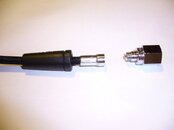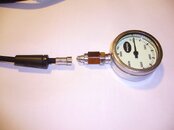Ragnar
Contributor
I've been a bit concerned since getting the Miflex HP hose just from the looks of it, well today it finally happened. I'd say I only have maybe 30 dives on it so I thought you guys should know that in my opinion there is a genuine design flaw that's different from the previous one where the actual hose let go. In my case the hose is fine, but it let go at a fitting that I wasn't aware was even there and don't think should be.
I had it set up with a boltsnap tied on in the usual place. As has been discussed here, once pressurized the gauge doesn't swivel like it would on an ordinary line, it takes two hands, one to hold the line from twisting and the other to reposition the gauge. BAM! ....that's when I found out there is an extra seal hiding in there and that it's not swaged like a normal line! The really bad part is that there is no way to properly tighten that fitting! I have had the Miflex LP lines for much longer and I like them, but there is no way I can recommend the High Pressure lines given this design, I'm switching back to rubber.
....that's when I found out there is an extra seal hiding in there and that it's not swaged like a normal line! The really bad part is that there is no way to properly tighten that fitting! I have had the Miflex LP lines for much longer and I like them, but there is no way I can recommend the High Pressure lines given this design, I'm switching back to rubber.
I had it set up with a boltsnap tied on in the usual place. As has been discussed here, once pressurized the gauge doesn't swivel like it would on an ordinary line, it takes two hands, one to hold the line from twisting and the other to reposition the gauge. BAM!
Attachments
Last edited:






